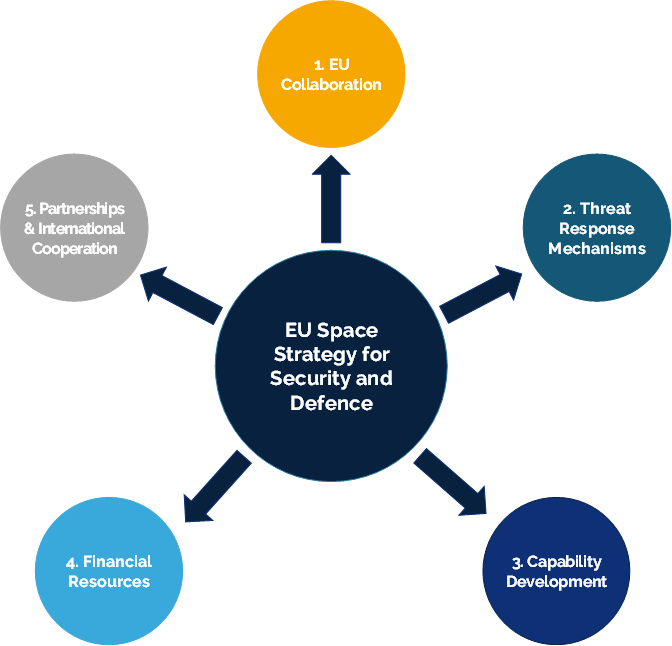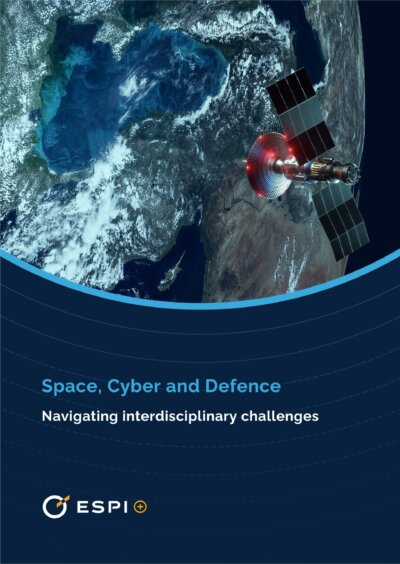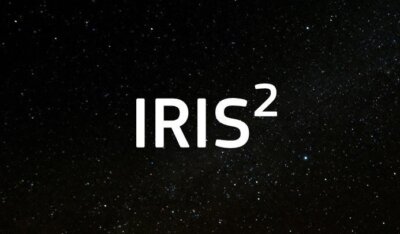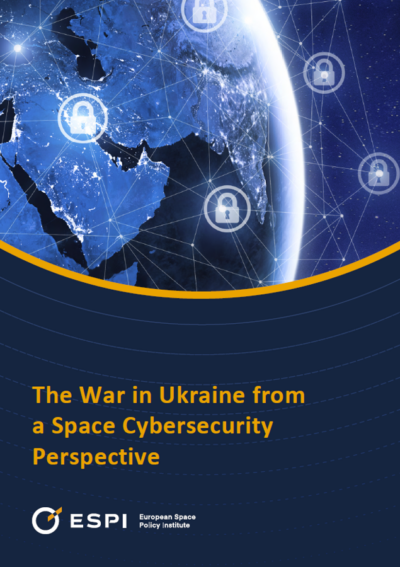This Brief is based on ESPI’s input to the European Commission’s public Call for evidence. It was initially submitted on 9 February 2023.
Announced in the 2022 Strategic Compass, the EU Space Strategy for Security and Defence has been published by the European Commission and the European External Action Service (EEAS) on 10 March 2023. Although this publication is the result of a long-lasting process, its release happens slightly more than a year after a cyberattack against the KA-SAT satellite damaged hundreds of terminals on EU soil, strongly affirming the need for prompt implementation of the upcoming Strategy.
This Brief presents the views elaborated by ESPI on this topic, which were provided as an input to the public Call for Evidence launched by the European Commission early 2023. As such, it highlights the expectations of the Institute with regard to the content of the Strategy and its implementation.
1. An evolving context calling for prompt action
The 2016 EU Global Strategy and the 2016 EU Space Strategy already acknowledged the competitive and contested character of the space domain, as well as the increasing dependency of Europe on space systems and services. The 2022 Strategic Compass further emphasised these points and called for a dedicated strategy to address the threats faced by European space assets. In parallel, the security and defence activities of the European Union (EU), such as the European Defence Fund and the Permanent Structured Cooperation (PESCO), have increasingly integrated space in recent years.
The evolution of the EU approach to space security and defence is in line with the EU’s increased transversal relevance in the field of security and defence, but also with developments in the international environment. In the past decade, all major space powers (United States, Russia, China, but also Japan and India) have proceeded with a restructuring of their security and defence space activities, namely:
- The reorganisation of military space establishments;
- The development of new capabilities for security and defence purposes;
- The elaboration of new strategic postures, including the extension of the operational domain to cislunar space.
2. An expanding perimeter of space security & defence
The EU Strategy will be a stepping stone towards an action-oriented roadmap, along three dimensions:
- Fostering the use of space systems and services for terrestrial security and defence activities;
- Addressing the security of European assets in space;
- Aligning Europe’s political, operational, diplomatic and governance dimensions.
Besides, the Strategy should note that there is a difference between the “safety & sustainability” and the “security & defence” aspects of space activities. When dealing with activities in space, the Strategy should focus on ”security & defence”, which addresses the protection of space assets against threats, even if it can sometimes be at odds with “safety & sustainability” concerns.
Similarly, the Strategy should give due consideration to the expansion of the security interest of the EU and its Member States beyond LEO, MEO and GEO (the current location of EU and national public and commercial assets), reaching cislunar space and the lunar surface.
Five distinct dimensions should receive due consideration in defining the EU Strategy and in its future implementation

2.1 Seizing opportunities offered by streamlined European collaboration
The main added value of establishing an EU strategy is to encourage and frame the cooperation between all EU Member States, including those that have a long history in military space, those that are new to this domain, those that are primarily users rather than suppliers of solutions, and those perhaps less aware of its importance.
It is therefore crucial that the Strategy addresses the coordination of EU and national stakeholders. Given the central role of national assets and multilateral cooperation in the security domain, the EU should find ways to contribute to streamline and/or coordinate the use of national assets for military purposes, including to protect other Member States’ assets. In this context, a number of questions should be addressed:
- Inclusivity of collaboration: Define the scope of collaboration that is appropriate between EU Member States for its implementation. In particular, balancing the benefits of an extensive collaboration (with as many countries as possible) and of a more restricted one (starting with countries that are willing and able to contribute) may be relevant.
- Depth of collaboration: Define a level of collaboration that is appropriate between EU Member States to implement the Strategy (dialogue, coordination, cooperation, integration…), keeping in mind that some mechanisms require stronger commitments. In this context, the EU could support coordination between its Member States.
- Foster EU collaboration: Define incentives to make EU-wide cooperation more attractive than current bilateral or multilateral partnerships among EU nations or between EU and non-EU countries.
- Improve internal EU coordination: Establish mechanisms to ensure greater integration between various EU institutional stakeholders, based on their respective mandates. Involved entities should be both those in charge of managing EU space activities and providing space services (e.g. DG DEFIS, EUSPA, EU Satellite Centre, EU SST) as well as users of such services for security and defence purposes (e.g. EEAS, EMSA, Frontex, DG HOME, DG ECHO…).
2.2 Garnering credibility through robust threat response mechanisms
An important element of the Strategy, to develop further during its implementation, is to define and clarify when and how the EU would reply to a potential threat against its space assets. To this end, robust processes need to be set up, and responsibilities delineated. This would allow the EU to react in a timely manner and be perceived as a credible actor internationally. Fortunately, the EU already has a starting point through the work performed and mechanisms established in the past.
- Define an attack: The Strategic Compass states that the EU and its Member States “aim to also further strengthen solidarity, mutual assistance and crisis response in case of attacks originating from space or threats to space-based assets, including through exercises”. Therefore, the Strategy should define the conditions for common action: when should such an action take place? In other words, what is the threshold defining an attack? Alternatively, what should be the threshold from which the EU and its Member States reserve the right to retaliate under “self-defence” as described in the UN Charter? This should be defined keeping in mind discussions at NATO level. It should also be decided whether this definition should be openly shared or not, as the latter would reinforce strategic ambiguity and allow Europeans to keep a margin of manoeuvre in case of crisis.
- Establish operational processes: The Strategy should address how a collective reaction to a hostile action against EU or Member States assets unfolds. More precisely, what should be the distribution of responsibilities in case of crisis: who is in charge of detecting the threat, sharing information (and with whom), and responding? There is the need to define resilient and timely operational processes, while relying on existing mechanisms, in particular Council decision 2021/698.
- Assess the costs and benefits of the envisaged processes: Furthermore, in case of crisis, what would be the consequences on EU societies and economies of triggering the established response mechanism in comparison with the level of threat faced by space systems and services? The Strategy should make sure that the response does not inflict more harm than the threat at stake.
- Identify the assets to protect: The Strategy should address the protection mechanisms to ensure the security of EU assets, and be open to also protect national assets if required. Similarly, the Strategy should clarify the extent to which commercial assets, in particular those that support military operations by EU Member States as well as EU Training Missions and Monitoring Missions, would benefit from these mechanisms.
2.3 Accelerating the development of EU capabilities
The scope and impact of further EU action in the domain of space security and defence will be dependent on the capabilities that Europe is able to leverage and on its autonomy of action. To reinforce EU means of action, dedicated research and development programmes and innovation-support mechanisms should be put in place. Ensuring the capacity of EU industry to indigenously develop and ensure the supply of critical technologies that are necessary for space security and defence is key.
- Optimise the use of current assets and leverage them for operation and future innovation: The EU should leverage its existing organisations to the best extent possible before creating new entities. This is for instance the case of the EU Satellite Centre, which has strong operational links with the intelligence and military communities, as well as with commercial providers, at EU and national level, and with ESA for innovation in dual-use technologies.
- Further relations with ESA: With regard to fostering innovation for the conduct of security missions on Earth, the EU could further its partnership with ESA, leveraging the latter’s activities such as the “Civil Security from Space” programme and the “Rapid and Resilient Crisis Response” Accelerator, as well as other programmes with potential security uses. The R&D activities of the Agency would indeed provide added value to the EU capability development efforts.
- Support the cross-fertilisation of EU activities: To strengthen European capabilities, the Strategy should leverage the dual-use dimension of space. To this end, the upcoming Strategy for EU Space R&I is an opportunity to ensure further synergies between R&I activities in the space and defence sectors (and could help fulfil the ambitions announced in the Action Plan on Synergies between civil, defence and space industries).
- Improve space situational awareness: The recent strengthening of EU SST membership is a positive step to ensure better space situational awareness and protect European space assets. The further enlargement of the Partnership as well as the increased development, by Member States, of their SSA capabilities, should be encouraged.
- Monitor global technology development: The Strategy should take stock of the technological developments and investigations made by other powers. The EU should move towards more distributed architectures, in particular multi-orbit and multi-system constellations, for example through studies on how Galileo could be complemented with LEO systems (e.g. leveraging ESA activities on LEO PNT).
- Develop a position on the development of counterspace capabilities: As part of its capability planning, the EU should assess whether it wants to develop its own deterrence or counterspace means (e.g. “bodyguard” satellites, non-destructive ASAT systems).
Define the spatial perimeter for EU actions: The Strategy should clarify in which orbital regimes and environments the EU and its Member States aim to conduct their security and defence activities, and plan accordingly the development of capabilities. In this context, the EU would better protect its interests if, like other space powers, it gives proper consideration to cislunar space as a strategic domain. Such an approach would also have a technological impact on the whole space ecosystem, for instance in terms of SSA/SST, satellite propulsion, launchers
2.4 Increasing the scale, availability and flexibility of financial resources
It is fundamental that sufficient resources can be accumulated and targeted towards the acute security needs of the EU and its Member States. To do so, the scale, availability and flexibility of resources should be ensured, as response mechanisms and capability-development addressed in preceding sections can only become meaningful if given the fuel to emerge, be maintained and be relied upon when needed.
- Flexibility of EU funding : Given the quickly evolving security context, adapting current EU financial frameworks and rules to the new scale and pace of the new threats is required. The implementation phase will have to deploy the means to fund the actions identified by the Strategy. Given recent developments, notably the war in Ukraine and its consequences, mechanisms to improve the flexibility of EU funding already at the stage of the Multiannual Financial Framework’s (MFF) mid-term review need to be considered, rather than waiting for the start of negotiations on the next MFF.
- Scale of funding: Dedicated EU funding lines for space security and defence both in terms of innovation, capability development and operational applications should be established. Notably, further expanding the scope of space-related calls under the European Defence Fund, and ensuring long-term funding consistency for themes already addressed (responsive space, persistent & reactive ISR, early warning). Secondly, it could be envisaged to pool service requirements of the EU and its Member States to move towards joint multi-annual procurement commitments of space security and defence systems and services in satellite imagery and analytics, space situational awareness, satellite communications, and combined capabilities.
- Ensuring availability of assets: Even if some assets and capabilities might only be relied upon sporadically, if ever, for the purposes addressed in the EU Space Strategy for Security and Defence, their strategic value is such that their availability must be secured and maintained. When such assets are commercially sourced or procured, public actors need to ensure resilience, i.e. that their availability is guaranteed at any time for missions and operations of strategic importance. In that context, it is crucial to ensure, through financial and other incentives or regulations, that:
- Commercial assets critical to security and defence interests of the EU and its Member States, remain available beyond their commercial viability, if no alternative is readily available;
- EU and its Member States have priority on the use of commercial assets they rely upon to serve their strategic objectives and critical operations, whenever they need to activate them.
2.5 Cultivating partnerships and international cooperation
The international dimension is a core topic that the Strategy will have to address. Here, the EEAS will play a major role in providing its expertise in dealing with international partners and addressing international fora. Cooperation with other European actors should be the primary focus, but the posture to adopt vis-à-vis non-European stakeholders is also a key element to define. Finally, building on the current dynamics in the space ecosystem, the role of and relations with private actors need to be clarified.
- Perception of the European posture: The Strategy should be clear in defining its tone and establish whether it plays a role as a deterrence tool or displays an engaging character. Balancing the imperatives of ensuring deterrence, while promoting the safety and sustainability of space activities, need to be kept as two intertwined but separate objectives, recognising their different, at times opposing, drivers.
- Relations with key non-EU countries: The Strategy should explicitly address the space security and defence relation that the EU wants to establish with other European states, e.g. the United Kingdom, Norway and Switzerland. In particular, the first two are currently developing their military space capabilities and could become important and reliable partners.
- Relations with the United States and NATO: The position vis-à-vis the United States and NATO should be determined and represented in international space fora either on a national basis or through an established coordination mechanism, or any other relevant means. Moreover, the EU should take stock of the renewed dynamism of NATO since the start of the war in Ukraine and, in particular, ensure consistency between its Strategy and NATO’s Space Policy.
- Relations with private actors: European industry plays a critical role in enabling space security and defence and the dynamism and progress of traditional and emerging commercial actors could be further leveraged. While allowing commercial activities (appropriately regulated), it is yet crucial to ensure that the search for public-private synergies is designed in a way that adequately protects the security and defence interests of EU and Member States institutions.
- Establishment of alliances, beyond traditional partnerships: The Strategy should establish which countries or regions the EU and its Member States can rely on as partners, beyond traditional alliances. In particular, European stakeholders should identify the missions that may be open to cooperation and those that should be restricted to European stakeholders. How can the EU benefit from such alliances (including to enhance its resilience) without becoming too dependent and how can it promote the use of its own assets by partners?
3. A Strategy to protect European assets & ensure international stability in space
The EU Space Strategy for Security and Defence will be a major milestone in the future of military space activities in Europe. The process leading to the elaboration of this Strategy has given the opportunity to raise awareness of all states on the relevance of space security and defence. Its implementation can help creating a common vision and encourage Member States to step up their investments.
A key element of the implementation process will be to ensure that EU activities fit and coordinate with efforts conducted at national, multilateral and intergovernmental level, in order to multiply the capacity of European stakeholders to act decisively in this domain and increase the credibility and leverage of the EU and its Member States in global engagements and international fora.




